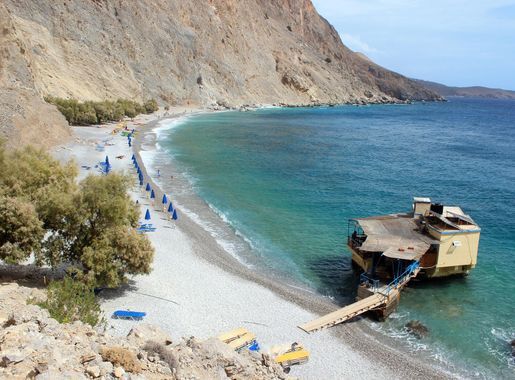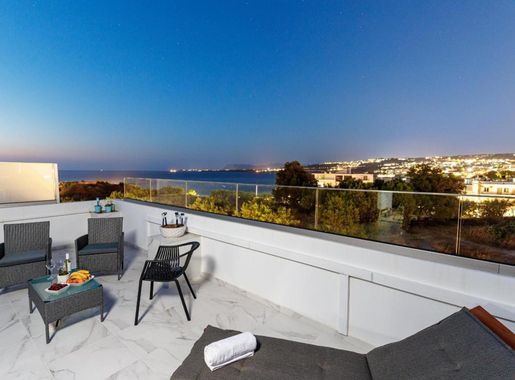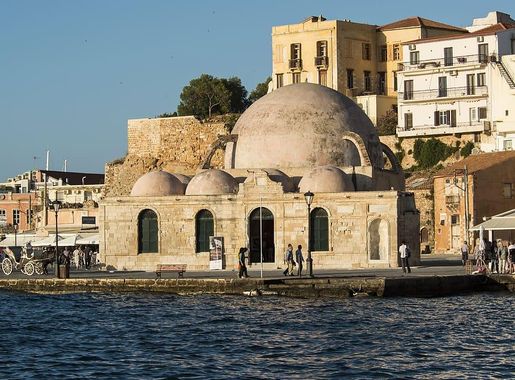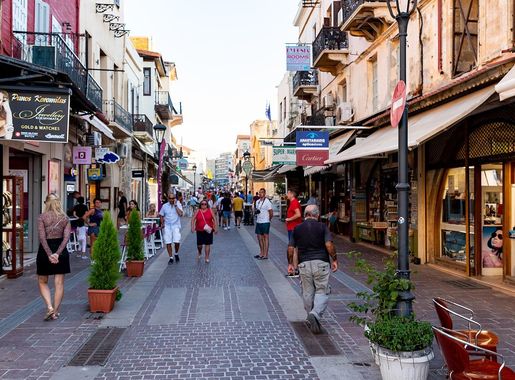
Nea Chora: Coastal Charm in Chania
Discover Nea Chora in Chania, Greece: A coastal gem offering pristine beaches, exquisite seafood, and authentic Cretan charm just a short stroll from Chania's old town.
Nea Chora is a picturesque neighborhood located just west of Chania's bustling old town. Known for its beautiful sandy beach, Nea Chora offers a more relaxed and authentic Greek experience compared to the more tourist-heavy areas of Chania. The beach is a perfect spot for sunbathing and swimming, with crystal-clear waters that are ideal for families and solo travelers alike. One of the highlights of Nea Chora is its vibrant dining scene. The neighborhood is renowned for its seafood tavernas, where you can enjoy freshly caught fish and traditional Cretan dishes while overlooking the serene sea. The laid-back atmosphere of these eateries makes them a favorite among locals and visitors who seek a genuine taste of Cretan hospitality. Strolling through Nea Chora, visitors will find charming streets lined with colorful houses, local shops, and friendly cafes. The area is also home to several cultural sites, including small churches and historical landmarks that offer a glimpse into the rich heritage of Chania. Whether you're looking to relax on the beach, savor delicious seafood, or explore local culture, Nea Chora provides a delightful escape from the more crowded tourist spots.
Local tips in Nea Chora
- Visit the local fish market in the morning for a true local experience and fresh seafood.
- Bring water shoes if you plan to swim; some parts of the beach can be rocky.
- Don't miss the sunset views from the beach; they are simply breathtaking.
- Try the local specialty 'Dakos' at one of the seaside tavernas.
- Explore the small alleys and streets behind the main beach area for hidden gems and charming cafes.
Nea Chora: Coastal Charm in Chania
Nea Chora is a picturesque neighborhood located just west of Chania's bustling old town. Known for its beautiful sandy beach, Nea Chora offers a more relaxed and authentic Greek experience compared to the more tourist-heavy areas of Chania. The beach is a perfect spot for sunbathing and swimming, with crystal-clear waters that are ideal for families and solo travelers alike. One of the highlights of Nea Chora is its vibrant dining scene. The neighborhood is renowned for its seafood tavernas, where you can enjoy freshly caught fish and traditional Cretan dishes while overlooking the serene sea. The laid-back atmosphere of these eateries makes them a favorite among locals and visitors who seek a genuine taste of Cretan hospitality. Strolling through Nea Chora, visitors will find charming streets lined with colorful houses, local shops, and friendly cafes. The area is also home to several cultural sites, including small churches and historical landmarks that offer a glimpse into the rich heritage of Chania. Whether you're looking to relax on the beach, savor delicious seafood, or explore local culture, Nea Chora provides a delightful escape from the more crowded tourist spots.
Iconic landmarks you can’t miss
Old Venetian Port of Chania
Experience the rich history and vibrant culture at the Old Venetian Port of Chania, a stunning landmark blending Venetian and Greek influences.

Nea Chora Beach
Experience the stunning beauty of Nea Chora Beach in Chania, Crete - a perfect blend of sun, sea, and delightful Cretan cuisine.
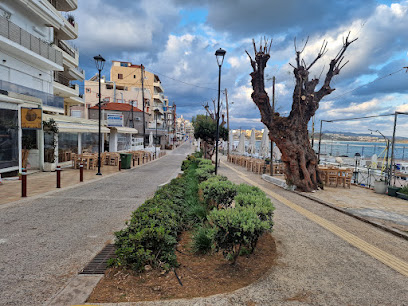
Talos Square
Experience the charm and tranquility of Talos Square in Chania, where lush landscapes meet rich history, providing the perfect retreat for every traveler.
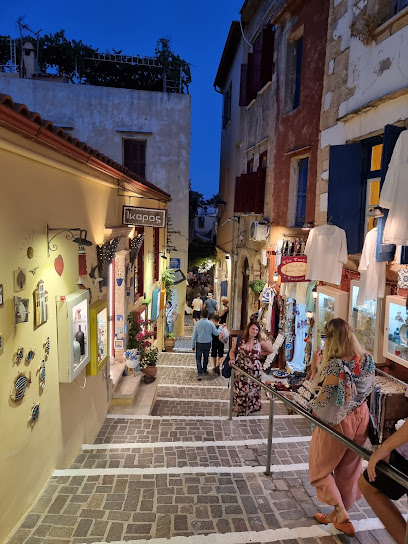
Nea Chora Beach.
Discover the beauty of Nea Chora Beach in Chania, where golden sands meet turquoise waters and local flavors await you.

Ottoman fountain
Explore the Ottoman Fountain in Chania, a historical landmark showcasing exquisite architecture and rich cultural heritage amidst vibrant local life.
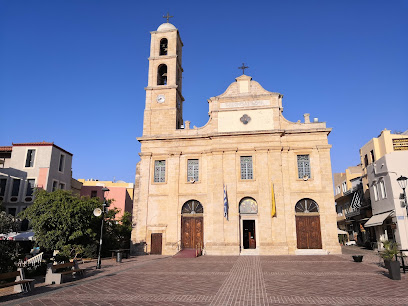
Byzantine/Post-Byzantine Collection of Chania | Βυζαντινή/Μεταβυζαντινή Συλλογή Χανίων
Explore the rich heritage of the Byzantine era at the Byzantine/Post-Byzantine Collection of Chania, where art and history come alive.
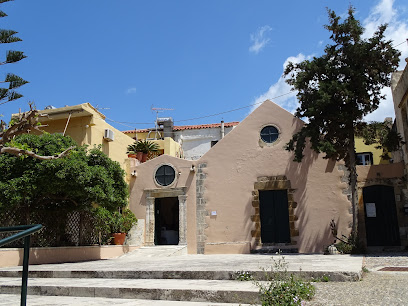
Byzantine Walls Of Chania
Discover the rich history of Crete at the Byzantine Walls of Chania, a stunning historical landmark with breathtaking views and architectural beauty.
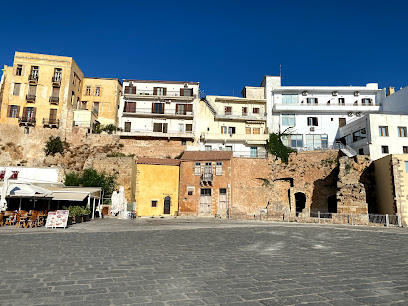
Byzantine Walls
Discover the Byzantine Walls of Chania - a majestic fortress reflecting rich history and breathtaking views in Crete, Greece.
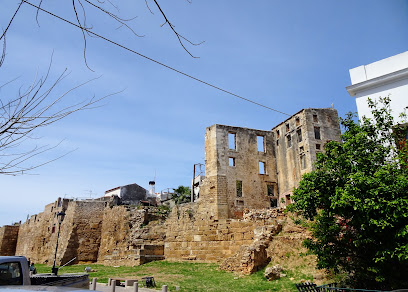
Statue von Athenagoras I
Discover the Statue of Athenagoras I in Chania, a stunning historical landmark reflecting Greece's rich cultural and religious heritage.
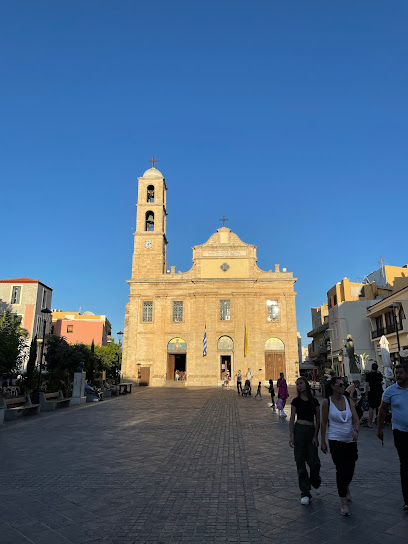
Chania Back Alleys
Explore the historic back alleys of Chania, where every corner unveils charming cafes, artisan shops, and centuries of rich culture.
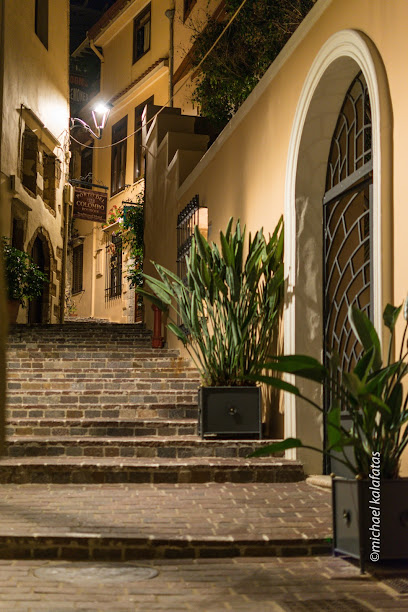
Unmissable attractions to see
Municipal Art Gallery
Explore the Municipal Art Gallery of Chania - a hub of creativity showcasing the rich artistic heritage of Crete and beyond.
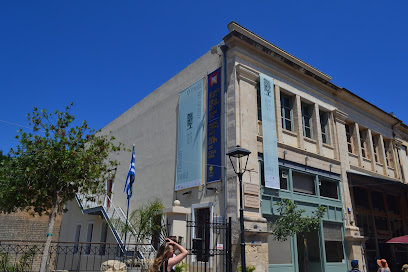
Ottoman fountain
Discover the enchanting Ottoman Fountain in Chania, a historical landmark that embodies the architectural elegance of the Ottoman era amidst a vibrant cultural scene.
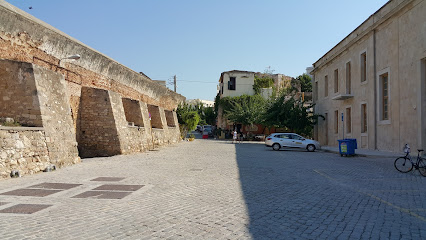
Naomi the Cat
Experience the enchanting world of Naomi the Cat in Chania, where feline friends and cozy ambiance create a unique tourist attraction.
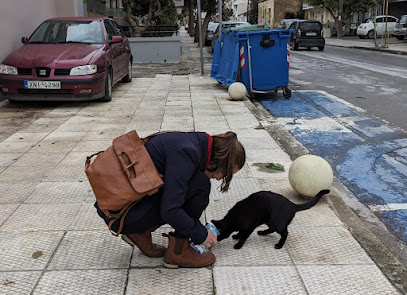
Manolios The
Experience the breathtaking beauty and rich cultural heritage of Manolios The, a must-visit tourist attraction in Chania, Crete.
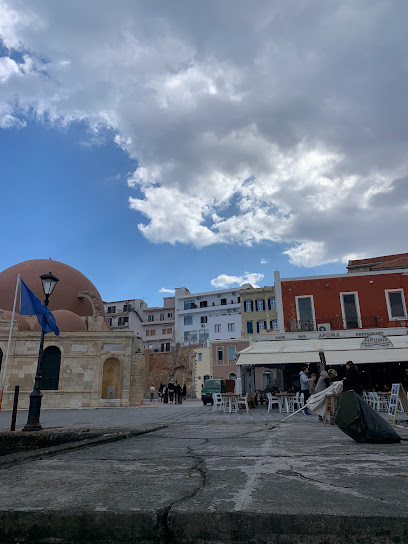
Essential places to dine
Bohème
Discover Bohème in Chania: A culinary haven blending traditional flavors with modern flair amidst charming surroundings.
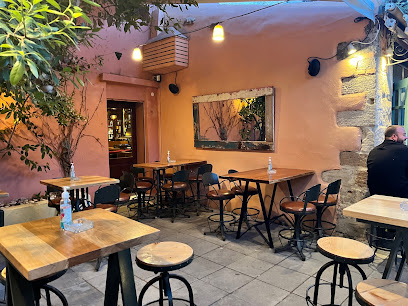
Colombo Kitchen & Bar
Experience exquisite Cretan cuisine at Colombo Kitchen & Bar in Chania – where every dish tells a story.

The Five Restaurant
Experience the essence of Cretan cuisine at The Five Restaurant in Chania - where local flavors meet breathtaking views.
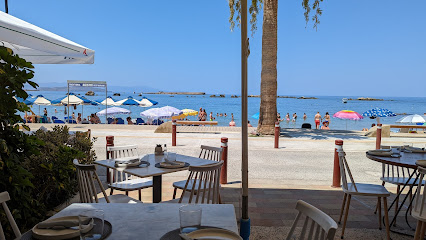
Woodstock restaurant coctail and more
Experience culinary delights at Woodstock Restaurant in Chania - where exquisite flavors meet breathtaking waterfront views.
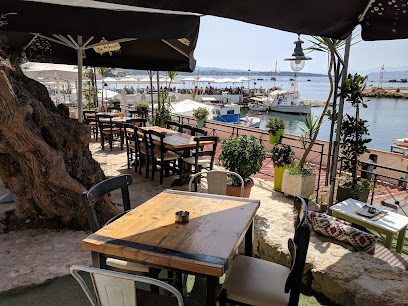
Kantouni
Discover Kantouni in Chania: A top-rated restaurant serving authentic Cretan cuisine with fresh local ingredients and warm hospitality.
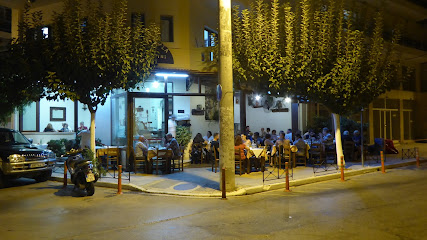
MonEs
Experience the finest Greek culinary delights at MonEs in Chania - where tradition meets innovation in every dish.
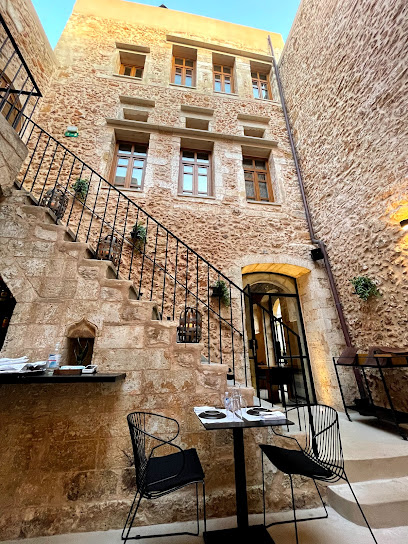
Manos Taverna
Experience authentic Cretan cuisine with stunning sea views at Manos Taverna in Chania.

Achinios Restaurant - Bar
Discover Achinios Restaurant - Bar in Chania: A Seafood Paradise Offering Stunning Sea Views and Exquisite Mediterranean Cuisine.
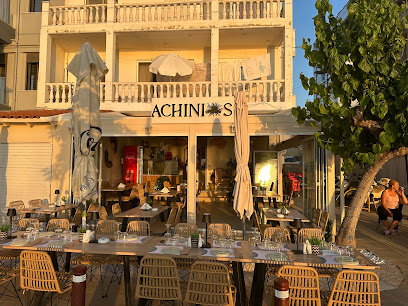
360° Fine Dining
Experience culinary excellence at 360° Fine Dining in Chania, where innovative Greek cuisine meets stunning views and elegant ambiance.

Pelagia Taverna
Experience authentic Greek cuisine at Pelagia Taverna in Chania - where every meal tells a story!
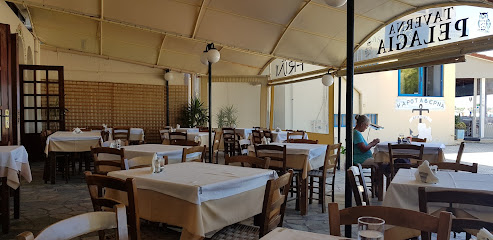
Markets, malls and hidden boutiques
το κελεπούρι
Uncover unique treasures at το κελεπούρι, Chania's charming consignment shop filled with vintage finds and local craftsmanship.
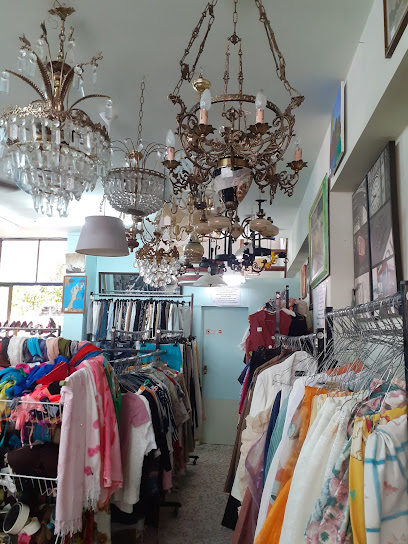
Intimissimi
Experience the elegance of Italian fashion at Intimissimi in Chania, where luxury lingerie and stylish clothing await you.

Temple Gift Shop
Explore the Temple Gift Shop in Chania for unique souvenirs, exquisite mosaic lamps, and a taste of local craftsmanship.
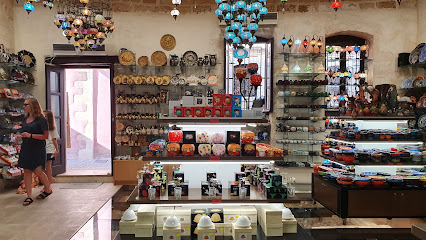
KURKUTA
Explore KURKUTA in Chania for unique souvenirs and T-shirts that embody the spirit of Crete.
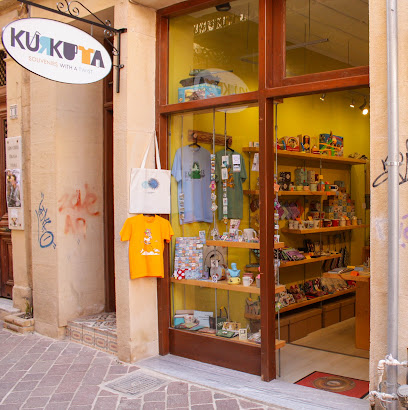
Monastiraki
Explore Monastiraki in Chania, Greece, where history meets creativity in a stunning architectural salvage store filled with treasures.
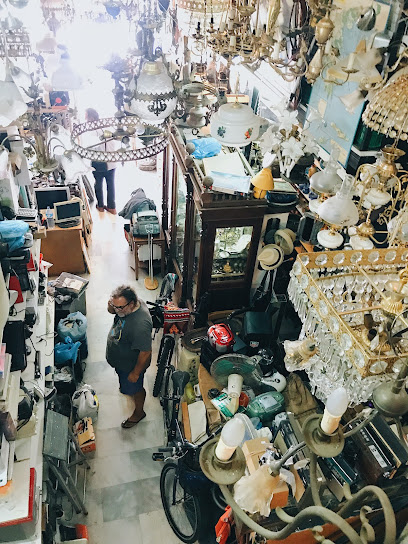
L&O Art and gifts
Explore L&O Art and Gifts in Chania for unique souvenirs and local art, capturing the spirit of Crete in every piece.
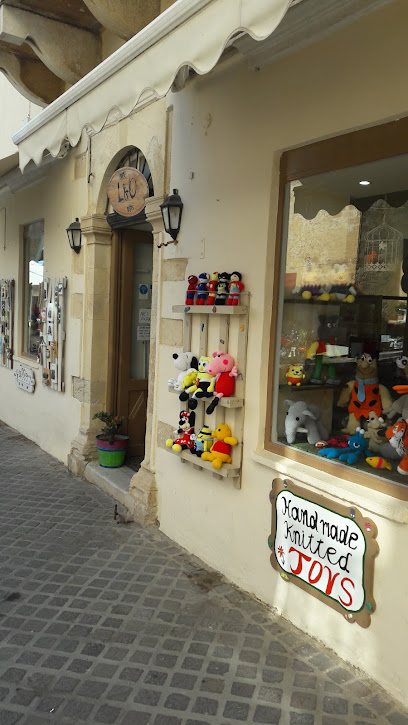
Elephant Store
Explore the Elephant Store in Chania for unique gifts, stylish clothing, and exquisite jewelry, capturing the essence of Crete's vibrant culture.
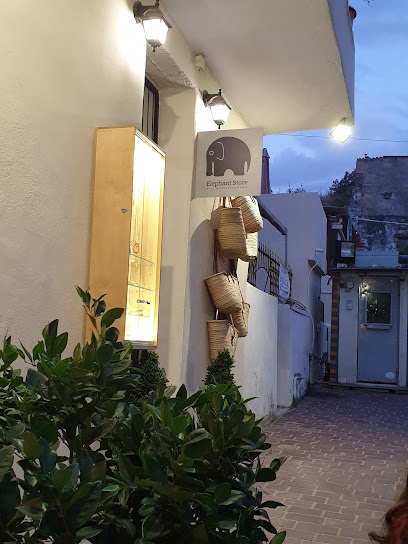
Canea T Shirt Souvenirs
Explore Canea T Shirt Souvenirs in Chania for unique, locally crafted t-shirts and gifts that capture the spirit of Crete.
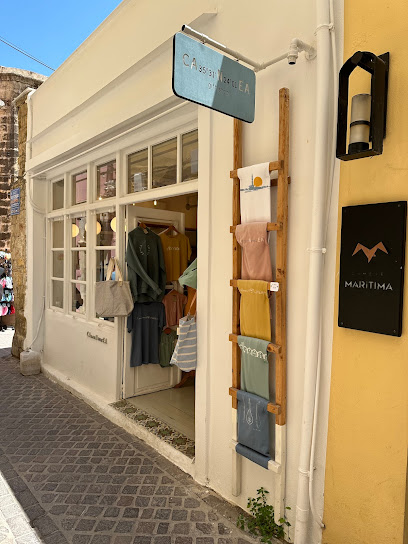
Anastasia Store
Explore the stylish world of Anastasia Store in Chania, where fashion meets Mediterranean charm through unique clothing and accessories.
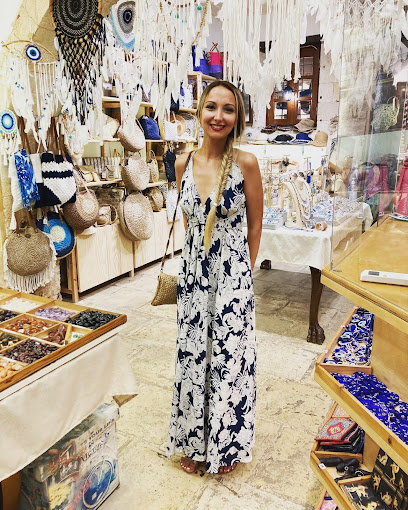
Agora Products Boutique
Discover the charm of Crete at Agora Products Boutique, your go-to destination for unique gifts and authentic local treasures in Chania.
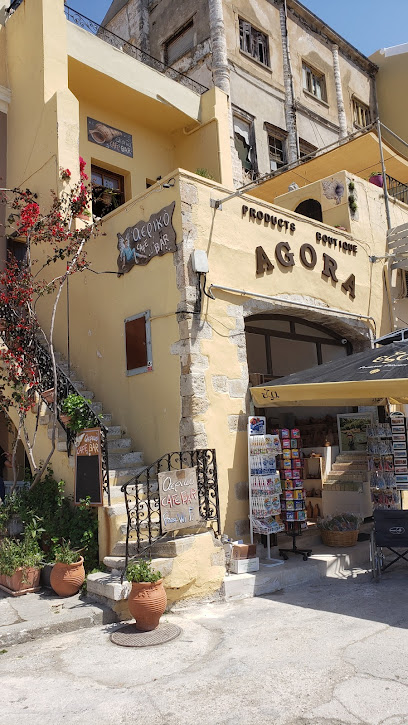
Essential bars & hidden hideouts
Sinagogi coctail bar
Discover the enchanting atmosphere of Sinagogi Cocktail Bar in Chania, Greece, where innovative cocktails meet vibrant nightlife.
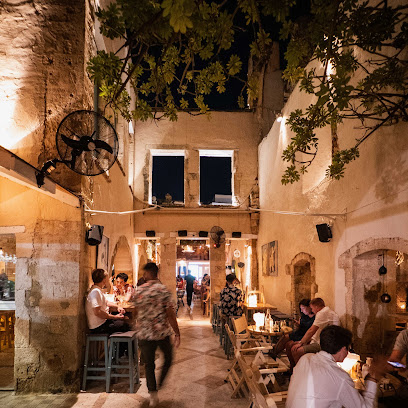
Fagotto Jazz Bar Chania
Discover the rhythm of Chania at Fagotto Jazz Bar, a vibrant spot for live jazz and crafted cocktails in Crete's enchanting atmosphere.

Karamela All Day Bar
Discover the lively atmosphere of Karamela All Day Bar, where exquisite cocktails and vibrant nightlife await you in the heart of Chania.
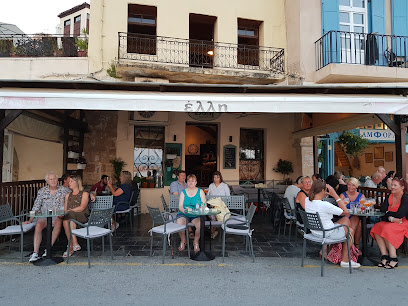
Aspros Gatos
Explore the flavors of Chania at Aspros Gatos, a charming wine bar and restaurant offering exquisite wines and delightful Cretan dishes.
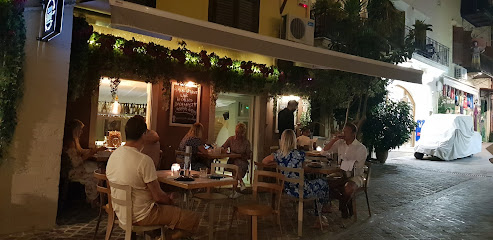
Tsalikis Fishermen Bar
Discover the charm of Tsalikis Fishermen Bar in Chania, where authentic Cretan seafood meets stunning seaside views.
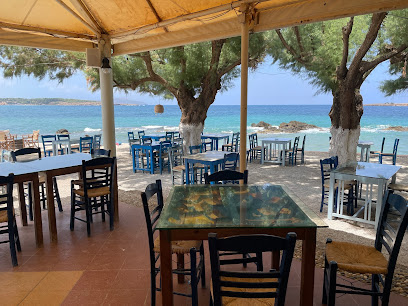
Synapsis - Gathering Bar
Experience the vibrant nightlife at Synapsis, Chania's premier gathering bar, known for its phenomenal drinks and welcoming atmosphere.
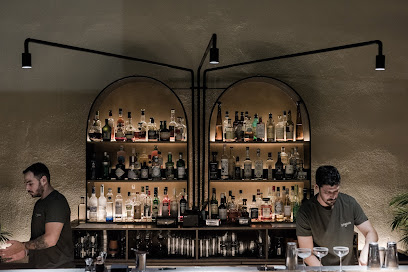
Christina's Snack Bar
Experience the authentic flavors of Crete at Christina's Snack Bar, a local favorite for drinks, snacks, and a vibrant atmosphere in Chania.
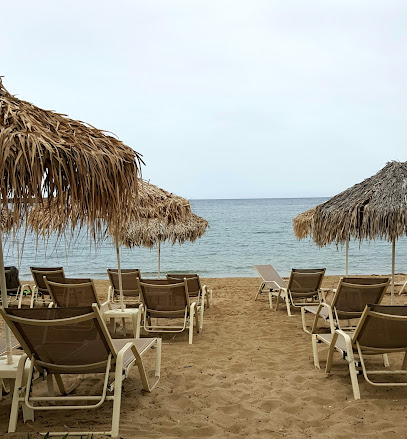
No Name All Day Bar
Experience the charm of Chania at No Name All Day Bar – your go-to spot for delicious food and drinks in a vibrant atmosphere.
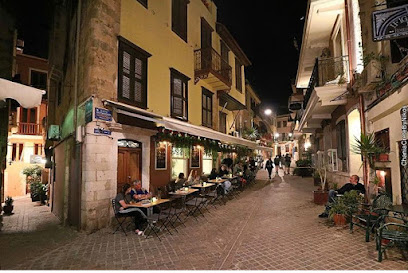
ZEN Lounge Cafe Bar Restaurant
Discover the serene atmosphere and delightful cuisine at ZEN Lounge Cafe Bar Restaurant in Chania, a perfect retreat for all travelers.
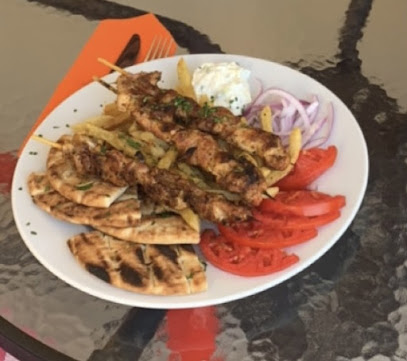
Mhtpakh Kaith Coffee/Bar
Discover the inviting Mhtpakh Kaith Coffee/Bar in Chania, where rich coffee and vibrant ambiance create a perfect retreat for travelers.
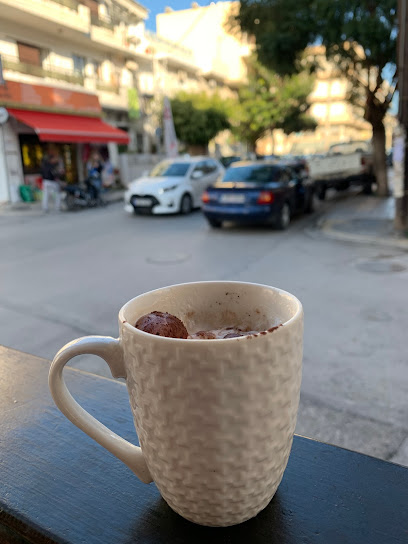
Local Phrases
-
- HelloΓεια σας
[Yia sas] - GoodbyeΑντίο
[Adio] - YesΝαι
[Ne] - NoΌχι
[Ohi] - Please/You're welcomeΠαρακαλώ
[Parakalo] - Thank youΕυχαριστώ
[Efharisto] - Excuse me/SorryΣυγνώμη
[Signomi] - How are you?Τι κάνετε;
[Ti kanete?] - Fine. And you?Καλά. Εσείς;
[Kala. Esis?] - Do you speak English?Μιλάτε αγγλικά;
[Milate anglika?] - I don't understandΔεν καταλαβαίνω
[Den katalavaino]
- HelloΓεια σας
-
- I'd like to see the menu, pleaseΘα ήθελα να δω το μενού, παρακαλώ
[Tha ithela na do to menu, parakalo] - I don't eat meatΔεν τρώω κρέας
[Den troo kreas] - Cheers!ΥΓΕΙΑ!
[Yia!] - I would like to pay, pleaseΘα ήθελα να πληρώσω, παρακαλώ
[Tha ithela na plirosso, parakalo]
- I'd like to see the menu, pleaseΘα ήθελα να δω το μενού, παρακαλώ
-
- Help!Βοήθεια!
[Voithia!] - Go away!Φύγε!
[Fyge!] - Call the Police!Καλέστε την Αστυνομία!
[Kaleste tin Astinomia!] - Call a doctor!Καλέστε ένα γιατρό!
[Kaleste ena giatro!] - I'm lostΈχω χαθεί
[Eho hathi] - I'm illΕίμαι άρρωστος
[Eimai arrostos]
- Help!Βοήθεια!
-
- I'd like to buy...Θα ήθελα να αγοράσω...
[Tha ithela na agoraso...] - I'm just lookingΑπλά κοιτάω
[Apla kitao] - How much is it?Πόσο κοστίζει;
[Poso kostizi?] - That's too expensiveΑυτό είναι πολύ ακριβό
[Afto ine poli akribo] - Can you lower the price?Μπορείτε να χαμηλώσετε την τιμή;
[Borite na hamilosete tin timi?]
- I'd like to buy...Θα ήθελα να αγοράσω...
-
- What time is it?Τι ώρα είναι;
[Ti ora ine?] - It's one o'clockΕίναι μία ώρα
[Ine mia ora] - Half past (10)Μισή (10)
[Misi (10)] - MorningΠρωί
[Proi] - AfternoonΑπόγευμα
[Apoyema] - EveningΒράδυ
[Vradi] - YesterdayΧθες
[Hthes] - TodayΣήμερα
[Simera] - TomorrowΑύριο
[Avrio] - 1Ένα
[Ena] - 2Δύο
[Dio] - 3Τρία
[Tria] - 4Τέσσερα
[Tessera] - 5Πέντε
[Pente] - 6Έξι
[Exi] - 7Επτά
[Epta] - 8Οκτώ
[Okto] - 9Εννιά
[Ennia] - 10Δέκα
[Deka]
- What time is it?Τι ώρα είναι;
-
- Where's a/the...?Πού είναι ένα/το...;
[Pou ine ena/to...?] - What's the address?Ποια είναι η διεύθυνση;
[Pia ine i diefthinsi?] - Can you show me (on the map)?Μπορείτε να μου δείξετε (στο χάρτη);
[Borite na mou dixete (sto charti)?] - When's the next (bus)?Πότε είναι το επόμενο (λεωφορείο);
[Pote ine to epomeno (leoforeio)?] - A ticket (to ....)Ένα εισιτήριο (για...);
[Ena isitirio (ya...)?]
- Where's a/the...?Πού είναι ένα/το...;
History of Nea Chora
-
Nea Chora, meaning 'New Town' in Greek, emerged in the late 19th century as a distinct neighborhood separate from the historic core of Chania. Its development was influenced by the expanding port facilities and the growing population, necessitating additional housing and infrastructure. This period marked the transition of Chania from a medieval city to a modern urban center.
-
Historically, Nea Chora served as a cultural crossroads, where various ethnic groups, including Greeks, Venetians, and Ottomans, coexisted. This mixture of cultures is reflected in the architecture, culinary traditions, and local customs. The neighborhood's waterfront, lined with cafes and tavernas, is a testament to the region's vibrant social life and its communal heritage.
-
The Cretan Revolution of 1866-1869 had significant repercussions for Nea Chora and the broader Chania region. During this tumultuous period, local residents actively participated in the struggle for autonomy from Ottoman rule. The neighborhood became a focal point for revolutionary activities, with many inhabitants facing hardships and challenges in their quest for freedom.
-
The early 20th century brought further changes to Nea Chora, particularly after the establishment of the Cretan State in 1898 and later its incorporation into Greece in 1913. Infrastructure improvements, including roads and utilities, transformed the neighborhood, enhancing connectivity with the rest of Chania and contributing to its urbanization. The area became increasingly popular with locals and tourists alike, especially for its beaches.
-
In recent decades, Nea Chora has evolved into a prominent tourist destination, known for its picturesque seafront and sandy beaches. The neighborhood has maintained its traditional charm while accommodating modern amenities catering to visitors. Local seafood tavernas are particularly famous, offering fresh catches and traditional Cretan cuisine, thus preserving the culinary heritage of the region amidst its contemporary growth.
Nea Chora Essentials
-
Nea Chora is easily accessible from Chania city center, located just a 15-20 minute walk away. You can also take a local bus from Chania's central bus station (Ktel) to Nea Chora, which runs frequently. Taxis are available and can be hailed from the street or booked via phone. If you're coming from the Chania International Airport, a taxi ride will take about 30 minutes, while shuttle services and car rentals are also options.
-
Nea Chora is a compact neighborhood, making it ideal for walking. You can also rent bicycles from local shops to explore the area. Public buses connect Nea Chora with other parts of Chania, though most attractions are within walking distance. Taxis are readily available for longer trips or if you're traveling late at night.
-
Nea Chora is generally safe for tourists. However, exercise standard precautions, especially at night. Avoid poorly lit areas and keep your belongings secure. Stay aware of your surroundings, particularly in crowded places such as markets and beaches. While crime targeting tourists is rare, petty theft can occur, so remain vigilant.
-
In case of an emergency, dial 112 for police, fire, or medical assistance. Local hospitals and clinics are equipped for urgent care. It is advisable to have travel insurance that covers medical emergencies. Pharmacies are available for minor health needs, and most staff speak some English.
-
Fashion: Do wear comfortable, modest clothing suitable for the beach and walking. Don't wear overly revealing attire away from the beach. Religion: Do respect local customs, particularly in churches and monasteries. Cover your shoulders and knees when visiting these sites. Public Transport: Do be courteous on public transport; offer your seat to the elderly. Don't eat or drink while on the bus. Greetings: Do greet locals with a friendly 'Kalimera' (Good morning) or 'Kalispera' (Good evening). Don't rush through interactions; a smile goes a long way. Eating & Drinking: Do try local specialties like seafood and Cretan delicacies. Don't waste food or refuse hospitality; it's considered impolite.
-
To experience Nea Chora like a local, visit the morning fish market where local fishermen sell their catch. Try dining at family-run tavernas along the waterfront for authentic Cretan dishes. If you're interested in beach activities, rent a sunbed and umbrella for a relaxed day at the beach. Engage with locals; they often share stories and recommendations that enhance your visit. Lastly, don't miss the sunset views from the promenade—it's a favorite among locals.
Nearby Cities to Nea Chora
-
Things To Do in Rethymno
-
Things To Do in Crete
-
Things To Do in Heraklion
-
Things To Do in Pyrgos
-
Things To Do in Santorini
-
Things To Do in Kalamata
-
Things To Do in Mykonos
-
Things To Do in Nafplio
-
Things To Do in Athens
-
Things To Do in Olympia
-
Things To Do in Kos
-
Things To Do in Bodrum
-
Things To Do in Delphi
-
Things To Do in Samos
-
Things To Do in Patras

